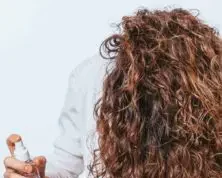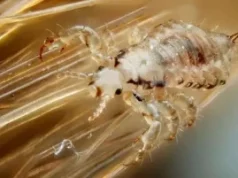The likelihood is that you are familiar with the term “dread detox,” particularly if you are loc’d. It is a tried-and-true method of thoroughly cleansing your dreads.
We want to clarify things up because there is a lot of confusing information out there on how to detox and deep clean your dreads. You will get all the information you require about dread detoxification in this article.
What Does It Mean to Detox Your Dreads?
Detoxing your dreads, also known as dreadlock detoxification, is a process aimed at maintaining the health and cleanliness of your dreadlocks. Dreadlocks are unique in that they require special care due to their tightly knotted structure, which can trap dirt, oil, and residue over time. Detoxing your dreads involves a thorough cleansing process to remove buildup, refresh your locks, and promote overall hair health.
Also Read: Is Nexxus Shampoo Good Or Bad For You?
Simple Process to Detox Your Dread
Here’s a simplified explanation of what a dread detox involves:
- Cleaning: The process begins with a thorough cleaning of the dreadlocks using a specialized dreadlock shampoo or a clarifying shampoo. This helps break down and remove any product buildup, sweat, or environmental pollutants.
- Soaking: Some people choose to soak their dreadlocks in a solution of warm water and apple cider vinegar. This helps to dissolve residues and balance the pH of the scalp, reducing itchiness and dandruff.
- Scrubbing: Gently scrub the scalp with a dreadlock brush or a soft bristle not to be too aggressive to avoid damaging the dreadlocks.
- Rinsing: Thoroughly rinse the dreadlocks to ensure all shampoo or vinegar residues are removed, leaving the locks clean and residue-free.
- Drying: Proper drying is crucial. Ensure the dreadlocks are completely dry, as moisture trapped within them can lead to mold and mildew growth.
- Maintenance: After the detox, regular maintenance is necessary. This includes using residue-free shampoos for routine washing and avoiding products that can contribute to buildup.
A dread detox not only improves the appearance of the dreadlocks but also promotes a healthy scalp, prevents issues like odor, itchiness, and mold, and helps maintain the integrity of the dreadlocks over time. The frequency of dread detoxing may vary depending on individual preferences and how quickly buildup accumulates.
Do You Need to Detox Locs?
Detoxifying or cleansing your locs, also known as dreadlocks, is not an absolute necessity for everyone, but it can be beneficial depending on individual factors and preferences. Here are some considerations:
- Buildup: If you use a lot of hair products, have hard water in your area, or if your scalp tends to produce excess oil, your locs may accumulate residue and buildup over time. In such cases, occasional detoxing can help maintain cleanliness and prevent issues like odor, itchiness, and potential mold growth.
- Itchiness and Scalp Health: If you experience itchiness or scalp discomfort, it might be an indication of buildup or an imbalance in the scalp’s pH. A dread detox can help alleviate these issues by removing residues and restoring scalp health.
- Preference: Some individuals prefer the look and feel of freshly detoxed locs. It can make the hair feel lighter, cleaner, and more manageable.
- Maintenance: Regular maintenance, such as routine washing with residue-free shampoos and avoiding products that cause buildup, can reduce the need for frequent detoxing. Proper maintenance can help keep your locs clean and healthy.
- Environmental Factors: Your environment plays a role. If you live in an area with high humidity or are exposed to a lot of dust and pollution, your locs might require more frequent attention.
Ultimately, whether or not you need to detox your locs depends on your specific situation and personal preferences. Some people may choose to detox their locs periodically as part of their maintenance routine, while others may find that regular maintenance is sufficient to keep their locs clean and healthy. It’s essential to pay attention to your locs and scalp’s condition and adjust your care routine accordingly
Also Read: Is Aveeno Shampoo and Conditioner Good or Bad For Your Hair
Dos and Don’ts of Dreadlock Detoxing
Certainly! Here are some dos and don’ts when it comes to dreadlock detoxing:
Dos:
- Use a Residue-Free Shampoo: Do use a specialized dreadlock shampoo or a residue-free shampoo for cleansing. These shampoos are formulated to prevent buildup in your locs.
- Be Gentle: Do be gentle when scrubbing your scalp. Use a soft-bristle brush or a dreadlock brush to avoid damaging your locs or causing unnecessary stress to your scalp.
- Rinse Thoroughly: Do ensure that you rinse your dreadlocks thoroughly after cleansing. Residue left behind can contribute to buildup.
- Air Dry Completely: Do allow your dreadlocks to air dry completely after washing. Ensure they are dry from the roots to the tips to prevent mold and mildew growth.
- Maintain Consistency: Do establish a regular maintenance routine for your locs. Regular washing with the right products and avoiding residue-causing substances will reduce the need for frequent detoxing.
Don’ts:
- Avoid Harsh Chemicals: Don’t use harsh chemicals or regular commercial shampoos that can leave residues in your locs. These residues can lead to buildup over time.
- Don’t Overdo It: Don’t detox your dreadlocks excessively. Over-detoxing can strip your hair of its natural oils, leaving it dry and brittle.
- Avoid Tight Hairstyles: Avoid tight hairstyles or pulling your locs too tightly, as this can stress the hair and scalp, potentially leading to damage.
- Avoid Wax and Heavy Products: Don’t use heavy hair waxes, gels, or products that can accumulate in your locs. These substances can be challenging to remove and may lead to buildup.
- Don’t Rush: Take your time when detangling or scrubbing your scalp. Rushing the process can result in damage to your locs or discomfort.
- Don’t Skip Maintenance: Even if you detox your locs, don’t neglect regular maintenance. Consistent care is key to keeping your dreadlocks clean and healthy.
Remember that everyone’s hair is different, and the frequency of dreadlock detoxing may vary depending on your specific circumstances. Pay attention to the needs of your locs and scalp, and adjust your care routine accordingly to keep them looking and feeling their best.






